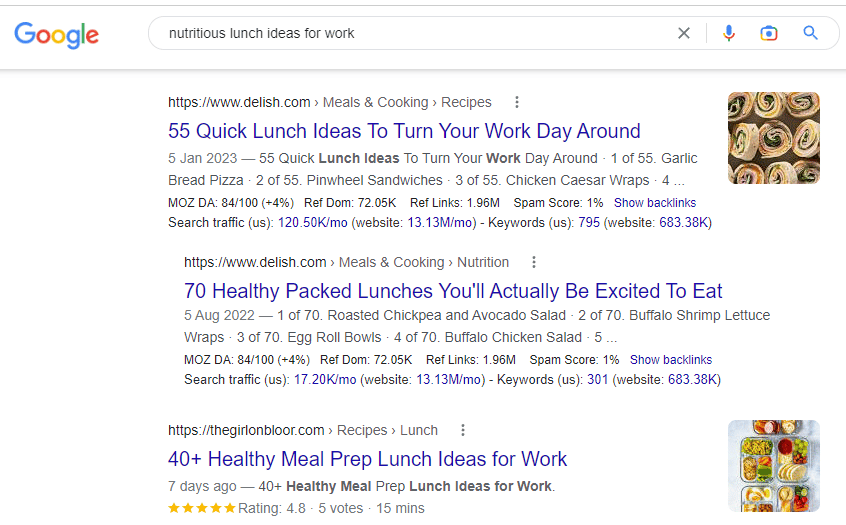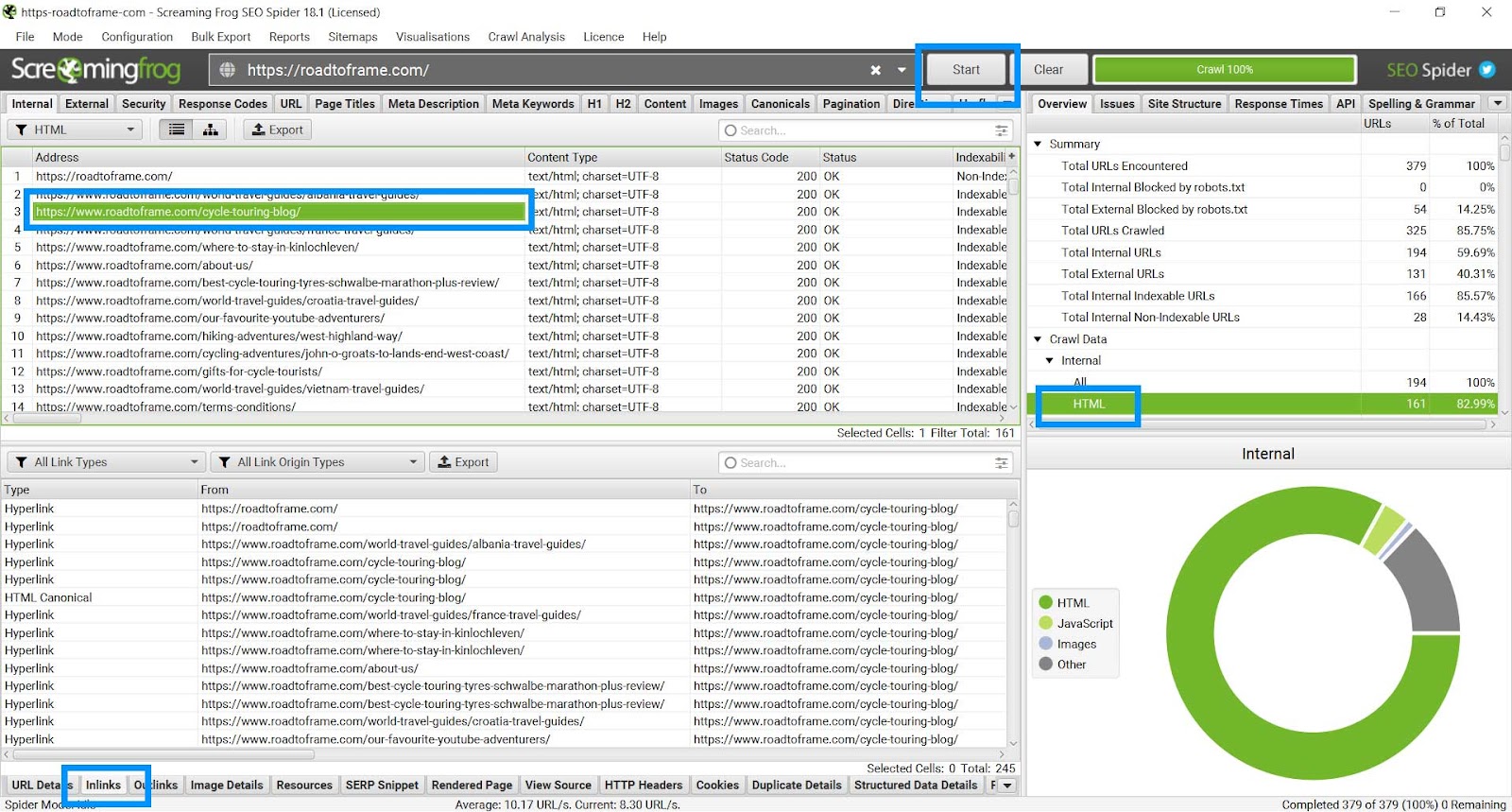Notifications
ALL BUSINESS
COMIDA
DIRECTORIES
ENTERTAINMENT
FINER THINGS
HEALTH
MARKETPLACE
MEMBER's ONLY
MONEY MATTER$
MOTIVATIONAL
NEWS & WEATHER
TECHNOLOGIA
TV NETWORKS
VIDEOS
VOTE USA 2026/2028
INVESTOR RELATIONS
COMING 2026 / 2027
ALL BUSINESS
COMIDA
DIRECTORIES
ENTERTAINMENT
FINER THINGS
HEALTH
MARKETPLACE
MEMBER's ONLY
MONEY MATTER$
MOTIVATIONAL
NEWS & WEATHER
TECHNOLOGIA
TV NETWORKS
VIDEOS
VOTE USA 2026/2028
INVESTOR RELATIONS
COMING 2026 / 2027
About Me
 Latinos Media
Latinos Media Latinos Media provides all types of news feeds on a daily basis to our Members
Posted by - Latinos Media -
on - February 28, 2023 -
Filed in - Marketing -
-
741 Views - 0 Comments - 0 Likes - 0 Reviews

Keyword cannibalization happens when you have two or more pages ranking for the same keyword. It is generally considered undesirable.
This article will help you decide whether you have a keyword cannibalization problem and, if so, how to solve it.
Is keyword cannibalization always problematic?Before fixing keyword cannibalization, check whether it is a real problem for your site.
Sometimes, two pieces of content ranking can be favorable, especially with an indented SERPs.

For Delish, these two pages ranking on page 1 are beneficial. In one search, they’ve got two pieces of content ranking. The indented SERP gives Delish more space in the page and increases their chances of a click.
A quick browse of these two pages will show similarities in ranking keywords. For example, according to Semrush, both pages rank for:
You don’t have to take action on two pages ranking when there are indented SERPs. Leave them especially if you’re getting clicks and conversions.
Identifying keyword cannibalization that needs fixingIf you don’t have access to software to help spot cannibalization, you can find potential issues with Google site search.
Use the following when searching:

The screenshot above shows how Google has listed content on and around “healthy” and/or “lunch” published on the Delish website.
If you have similar results, look at the pages and investigate if they are problematic.
To identify problematic cannibalization problems, look for the following:
A sudden drop in clicks or impressionsThis can happen when you publish a new piece of content and Google prioritizes the new piece over what was already ranking.
This can return to normal after a while, but if it doesn’t, look at the next section on fixing keyword cannibalization.
Struggling to rank despite your best effortsTwo pieces of content targeting the same SERP intent can be “confusing” to Google.
It indicates that your content strategy isn’t as robust as it should be.
Pages ranking for a keyword that isn’t supposed toIf you’ve worked on your content strategy, but the wrong page still ranks, then you’re almost definitely cannibalizing yourself.
In this situation, follow our tips on what to do when the wrong page ranks.
Fixing keyword cannibalizationHow you fix keyword cannibalization will depend on the problem it's causing and the solution most useful for your readers.
Here are some keyword cannibalization solutions to consider.
Internal linkingAn internal linking strategy is a good first effort to resolve keyword cannibalization.
Here, you won't be taking pages down or redirecting content – a fairly safe option if you feel nervous about the consequences.
How to fix keyword cannibalization with internal linking
Internal linking is a powerful tool for SEO. It's useful for readers to find relevant sources and related content. It also gives Google a directive on what a page should rank for.
If you're doing content the right way, you know what the two pieces of content should rank for.
So you can use an internal link from one piece to the other to reinforce where they sit in website architecture and what people might search to find the piece.
In this instance, opt for an exact match keyword or something close to it.
Review your internal links and identify links pointing to the two ranking pieces. You might be pointing to the pages with the same anchor text.
You can get a good idea of what anchor text you're using to link to pages with Screaming Frog.
Open Screaming Frog, then click crawl your site. Filter by HTML, click the page you want to view, then hit inlinks.

You'll see which pages link to your page and with what anchor text. With a quick edit you can straighten out your internal linking strategy.
Pro tip: When building a content plan, prepare a content database (like a Google Sheet) where you can pick a keyword from the cluster to use in your anchor links. This process prevents writers from adding random internal links in their articles.
Refining keyword clusters and establishing clear search intentPerhaps you've identified keyword cannibalization but want to keep the two pages. In this case, you might need to give each piece a defined purpose.
To do this, develop a keyword cluster and establish clear search intent. Each piece of content must do something unique.
Using the Delish example from above, we can see that although similar, the two articles have clear search intent.
Taking a packed lunch to work is synonymous with a work lunch, but it isn't just for work purposes.
Content consolidation and 301 redirectsIt's fairly intuitive when you need to do a content consolidation and a 301 redirect. Mostly, you can tell immediately if a page is targeting the exact same keyword.
Going back to the Delish example, although similar, the two pages on healthy lunches have two different intents. As mentioned, one article focuses more on lunches for work, and the other is about packed lunches.
Although nuanced, the two content pieces can co-exist assuming they're not causing issues behind the scenes.
However, if the two articles were "55 Healthy Lunches" and "The Best Healthy Lunches," there is an issue.
The target keyword is clearly similar – "healthy lunches" and "best healthy lunches." Sounds like the same thing, right?
To confirm, a quick search of "healthy lunches" and "best healthy lunches" returns almost the exact same SERPs.
So, these articles would be consolidated, and one would be redirected to the other.
How to fix keyword cannibalization with content consolidation and a 301 redirect
Before consolidating two (or more) articles, do your due diligence. Use data to help you decide which URL you're keeping and which one you're redirecting.

If the two pages need to exist but you don't want Google indexing both, you could add a canonical.
This method is useful on ecommerce websites, particularly Shopify sites, where the same product exists on multiple URLs.
We can see the canonical in action on Helm's Shopify website.
Their Xander Olive shoe exists on two URLs:
A search within the code of the /collections/ URL shows the canonical pointing to the product.

Cannibalization issues occur when there's no clear plan for content production. Without a plan, well-intentioned writers can deliver similar pieces of content.
To avoid cannibalization, keep a content log and monitor the following:
The closer you are to your content and its purpose, the less likely you are to create cannibalizing content. It helps to have a strategic SEO professional to guide the process so they can correctly assign keywords.
If each piece of content fits within a specific pillar or topic, you can filter content by that topic and double check you've not already created content before you write it.
Or, you can use your content research process to identify content that could be edited instead of recreated. Sometimes, a good edit on an existing article can do wonders for your SEO.
The post A guide to keyword cannibalization in SEO and how to fix it appeared first on Search Engine Land.